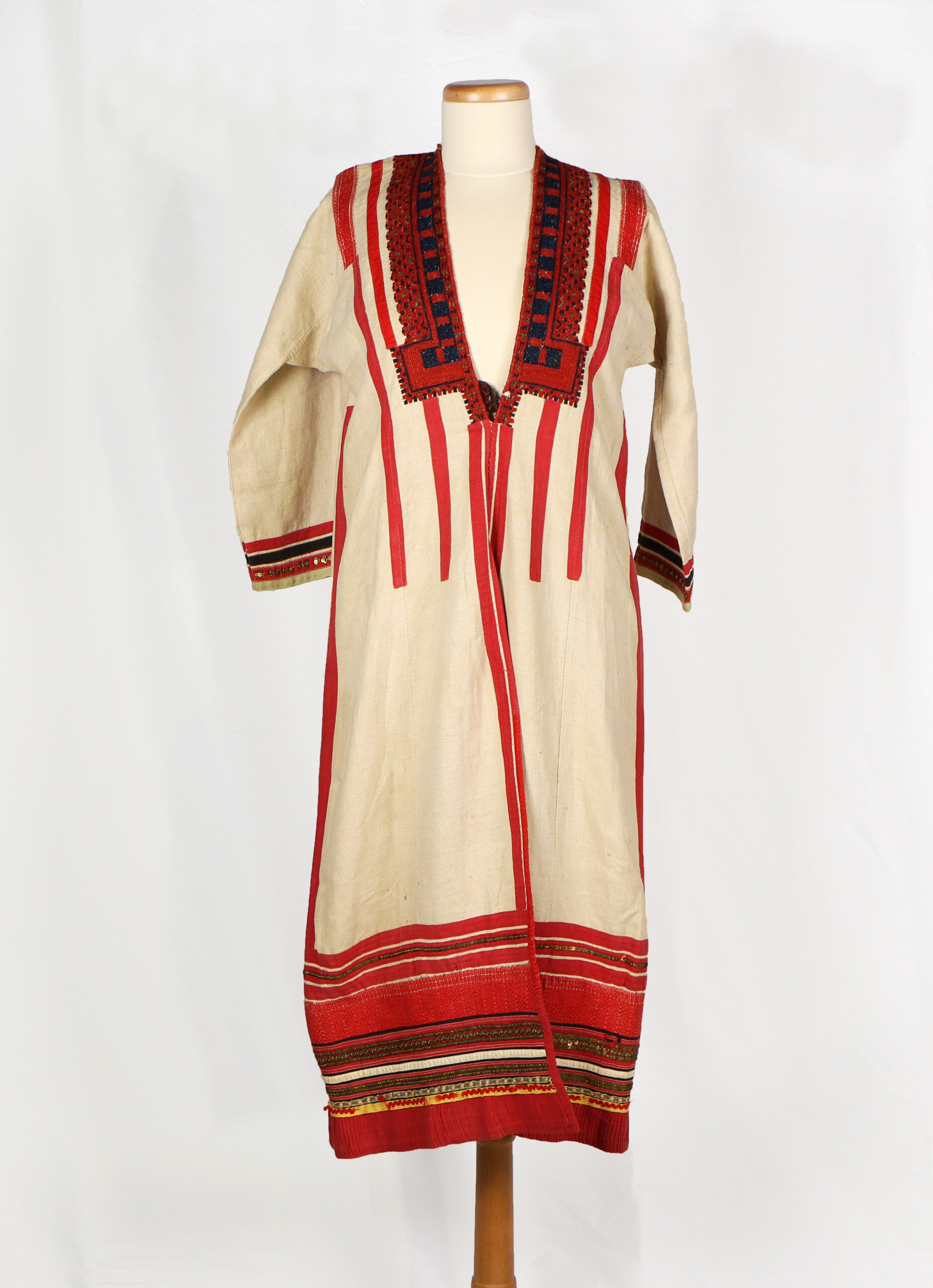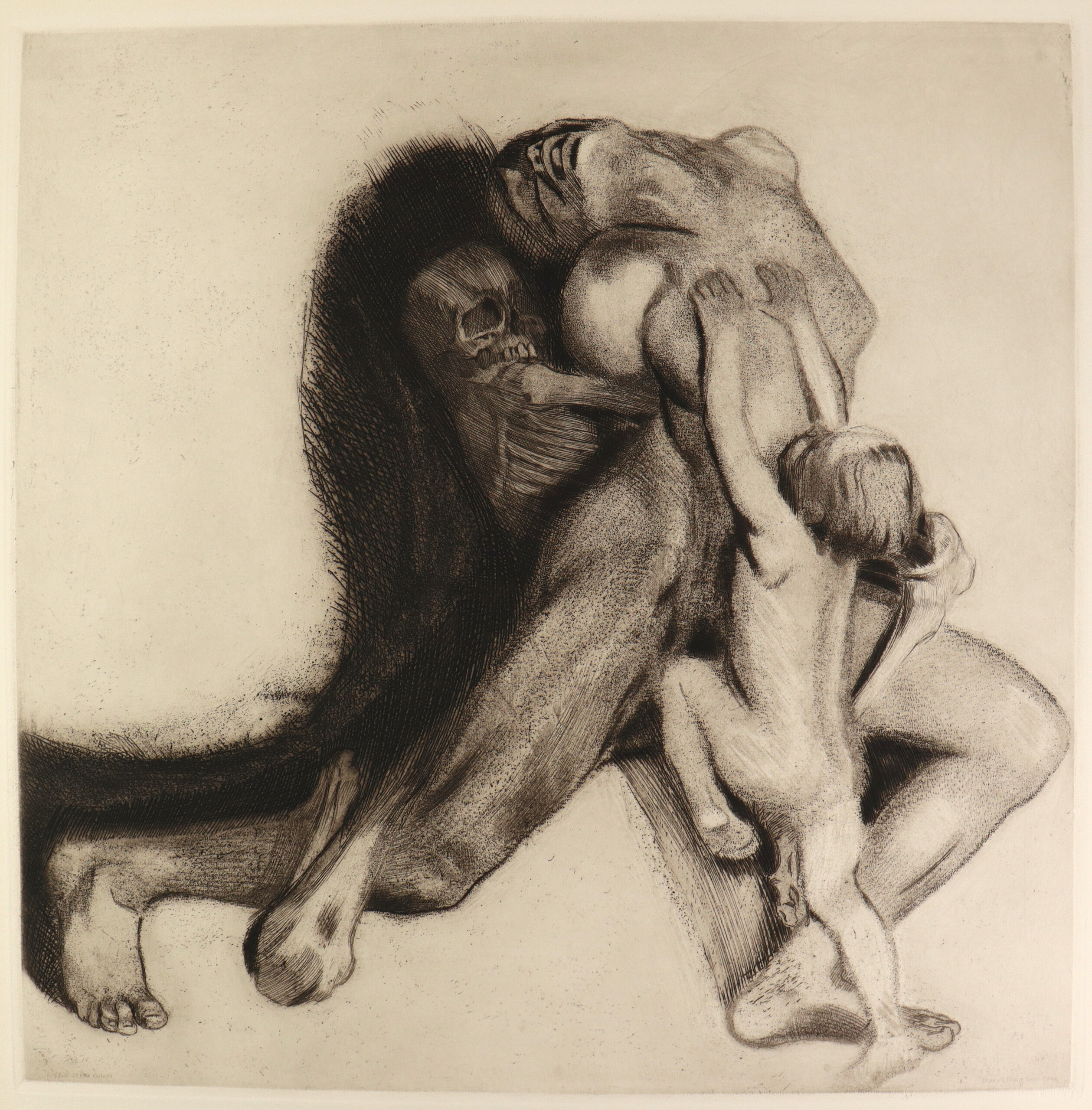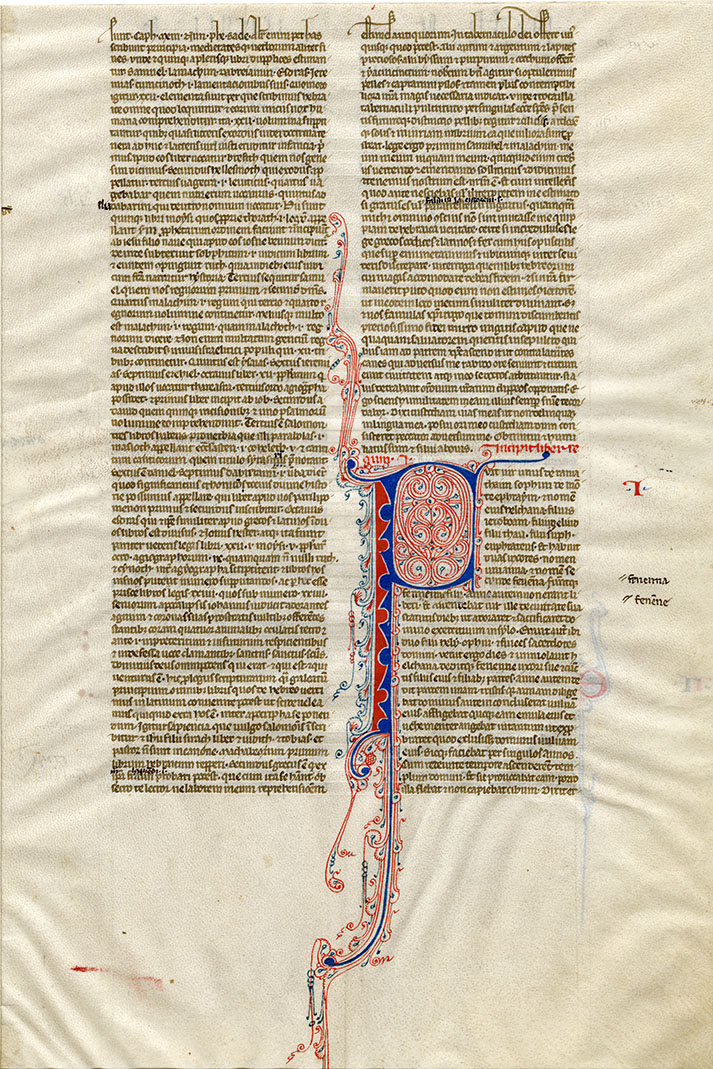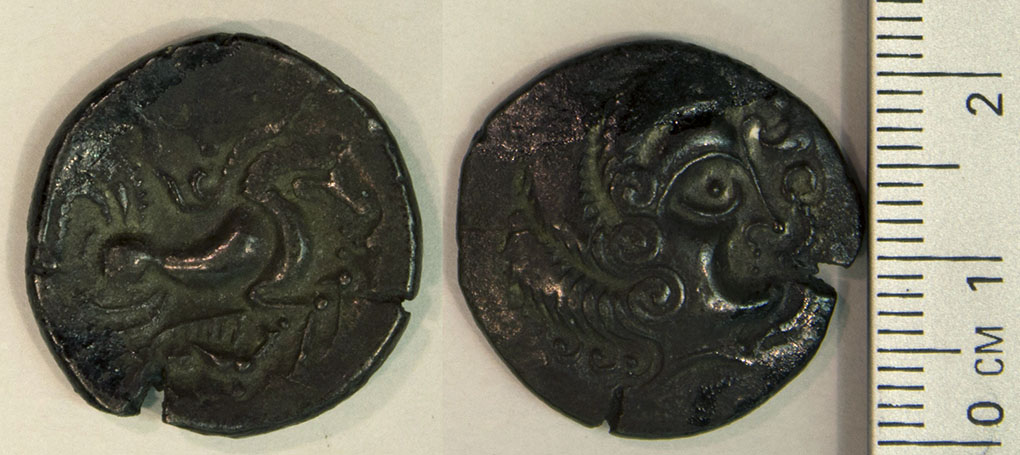Worn during secular township celebrations and religious observances, folk clothing provides a visual language of connection to heritage and aids in creating a sense of community for groups of people. This cămașă (kah-ma-shah), or blouse, is an important mode of cultural identification. Women wear these blouses beneath aprons or wrap-around skirts and vests that provide [...]
The Parting of Lancelot and Guinevere
Kelsey Malone2024-01-03T16:48:55-05:00The Victorian era marked a resurgence of popularity of Arthurian legends. The first publication of the Alfred Tennyson’s The Idylls of the King sold incredibly well – a pattern that unfortunately did not continue with the edition illustrated by Gustave Doré – representing a Victorian fondness for stories of growth and change in a time [...]

“Ball Dress,” Fashion Plate for “La Belle Assemblée”
Kelsey Malone2024-01-03T16:19:08-05:00Ball Dress is a print initially published in John Bell’s British women’s fashion magazine, La Belle Assemblée. This fashion plate pictures a wealthy, white, assumed-to-be married woman wearing a luxurious dress inspired by French fashion. It was created by “Mrs. Bell,” or Mary Ann Walker Bell, editor of the fashion section between 1810 and 1820 [...]
Tod Und Frau (Death and the Woman)
Kelsey Malone2024-01-03T15:49:40-05:00Käthe Kollwitz is considered one of the most notable European printmakers of the twentieth century. As a German artist who lived and worked during both world wars, Kollwitz’s artwork frequently features motifs of grief and loss. Tod Und Frau depicts a nude woman being trapped by Death as a child desperately reaches for her. Kollwitz [...]
Megillat Esther
Kelsey Malone2024-01-03T16:41:32-05:00There is no telling what exactly this little scroll has seen in its lifetime, or where its journey has taken it. It has likely seen the bustling and tense streets of an early twentieth century Jerusalem, when it was sold to an American tourist there and brought to Kentucky. Was it made to be sold [...]
Leaf from a Medieval Bible
Constantine Botimer2016-08-02T15:53:59-04:00Until the development of movable type printing in the West in the 15th century, books were copied by hand. Parchment (prepared animal skin) was the usual material until paper came into common use. The Bible was among the most-copied and deeply studied texts. This leaf, from a Bible copied in Italy in the mid-13th century, [...]
Drachma
Constantine Botimer2016-07-27T19:54:25-04:00Greek coinage has existed since at least the seventh century B.C.E. Many scholars and numismatists consider the Classical period of Greek art to be the pinnacle of achievement for coins. This drachma coin was minted under the rule of Alexander the Great, the last of the Classical rulers. Classical Greek art was characterized by its [...]
“Yucca Aloifalia,” from Les Lilliacées
Constantine Botimer2019-05-15T09:05:18-04:00Jean-Pierre Redouté was born in Saint-Hubért in what is today Belgium. He came from a family of painters and decorators, and left home at age 13 to pursue painting. In 1782 he made his way to Paris, where he was introduced to many aristocrats. In Paris he moved toward botanical illustration and became official draughtsman [...]
Jersey Coin
Constantine Botimer2016-07-26T20:44:18-04:00Celtic coins began as stylistic copies of Greek coins. As coinage moved throughout the rest of Gaul from Greek outposts on the Mediterranean, the styles abstracted to fit the current Celtic aesthetic. The Gauls were Celtic groups living in France before Roman conquest, and had social and governmental systems in place that were just as [...]
Coin
Constantine Botimer2016-07-26T20:40:08-04:00This coin, featuring Persephone on the obverse and Nike on the reverse, was minted in Syracuse, Sicily. Syracuse started as a Greek colony and served as an important outpost of Greek culture in the central Mediterranean. For some time, it was even the most powerful Greek city in the Mediterranean. This power, however, meant that [...]









